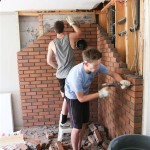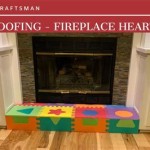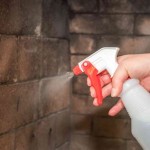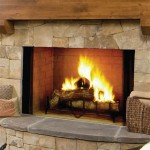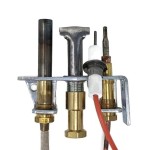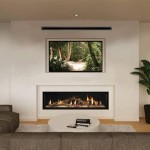Best Way to Clean an Old Brick Fireplace
An old brick fireplace can be a beautiful and central feature in a home, adding character and warmth. However, over time, fireplaces accumulate soot, creosote, and dust, diminishing their aesthetic appeal. Regular cleaning is essential not only to maintain the fireplace's appearance but also to ensure safe and efficient operation. This article explores the best methods for cleaning an old brick fireplace, encompassing both preventative measures and effective cleaning techniques.
Understanding the Challenges of Cleaning Old Brick
Cleaning an old brick fireplace presents unique challenges compared to newer installations. Older bricks are often more porous and susceptible to damage from harsh chemicals or abrasive cleaning methods. The mortar joints, which hold the bricks together, can also degrade over time, making them vulnerable to moisture and further erosion. Furthermore, the accumulation of decades of soot and creosote can create stubborn stains that require specialized cleaning approaches.
Before undertaking any cleaning process, it's crucial to assess the condition of the brick and mortar. Look for cracks, crumbling, or loose sections. If significant damage is present, it may be necessary to consult a professional mason for repairs before attempting any cleaning. Attempting to clean damaged brick can exacerbate the problem, leading to further deterioration and potentially compromising the structural integrity of the fireplace.
Another important consideration is the type of fuel burned in the fireplace. Wood-burning fireplaces tend to produce more soot and creosote than those that burn gas. The type of wood burned also influences the amount and composition of the residue. Softwoods like pine tend to produce more creosote than hardwoods like oak or maple. Understanding the history of fuel usage can help in selecting the most appropriate cleaning methods and products.
Essential Tools and Materials
Effective cleaning of an old brick fireplace requires the right tools and materials. Gathering these items beforehand will streamline the cleaning process and ensure optimal results. The following list outlines the essential items needed:
1. Protective Gear: Safety is paramount. Wear gloves, eye protection, and a dust mask or respirator to protect against potential irritants and harmful particles. A drop cloth or plastic sheeting should be used to protect the surrounding floor and furniture from cleaning solutions and debris.
2. Stiff-Bristled Brush: A stiff-bristled brush, preferably with nylon bristles, is essential for scrubbing away loose soot and debris. Avoid using metal brushes, as they can scratch or damage the brick surface.
3. Vacuum Cleaner with Hose Attachment: A vacuum cleaner with a hose attachment is needed to remove loose dust and debris before and after cleaning. Use a HEPA filter to capture fine particles and prevent them from recirculating into the air.
4. Cleaning Solutions: Several cleaning solutions can be effective for cleaning brick fireplaces. These include:
- Dish Soap and Water: A mild solution of dish soap and warm water is a good starting point for general cleaning.
- Trisodium Phosphate (TSP): TSP is a powerful cleaner that can remove stubborn soot and grease. However, it's important to use it with caution, as it can be harsh and potentially harmful to the environment. Wear gloves and eye protection when using TSP, and follow the manufacturer's instructions carefully.
- Commercial Brick Cleaners: Several commercial brick cleaners are available that are specifically formulated for cleaning brick fireplaces. These cleaners typically contain a blend of surfactants and solvents that dissolve soot and grease. Choose a cleaner that is appropriate for the type of brick and mortar in your fireplace.
- Vinegar and Water: A solution of equal parts white vinegar and water can be effective for removing light stains and mineral deposits.
5. Sponges and Rags: Use sponges and rags to apply cleaning solutions and wipe away dirt and grime. Microfiber cloths are particularly effective for cleaning smooth surfaces.
6. Spray Bottle: A spray bottle is useful for applying cleaning solutions evenly to the brick surface.
7. Putty Knife or Scraper: A putty knife or scraper can be used to remove stubborn deposits of soot or creosote.
Step-by-Step Cleaning Process
The cleaning process should be approached systematically to ensure thoroughness and minimize the risk of damage. The following steps outline the recommended cleaning procedure:
1. Preparation: Begin by preparing the work area. Cover the surrounding floor and furniture with drop cloths or plastic sheeting to protect them from cleaning solutions and debris. Open windows and doors to provide ventilation.
2. Dry Cleaning: Use the stiff-bristled brush to remove loose soot and debris from the brick surface. Work from the top down, brushing the soot into a pile on the hearth. Vacuum up the loose debris using the vacuum cleaner with a hose attachment.
3. Wet Cleaning: Choose the appropriate cleaning solution based on the severity of the stains and the type of brick and mortar. If using TSP, follow the manufacturer's instructions carefully. Apply the cleaning solution to the brick surface using a spray bottle or sponge. Allow the solution to sit for several minutes to soften the soot and grime.
4. Scrubbing: Use the stiff-bristled brush to scrub the brick surface, paying particular attention to areas with heavy soot accumulation. Work in small sections, and rinse the brush frequently with clean water. If necessary, use a putty knife or scraper to remove stubborn deposits of soot or creosote.
5. Rinsing: Rinse the brick surface thoroughly with clean water to remove all traces of the cleaning solution. Use a sponge or rag to wipe away any excess water.
6. Drying: Allow the brick surface to dry completely before using the fireplace. This may take several hours or even overnight, depending on the humidity and ventilation.
7. Post-Cleaning Inspection: After the brick is dry, inspect it for any remaining stains or damage. If necessary, repeat the cleaning process or consult a professional cleaner for more specialized treatment.
Addressing Specific Cleaning Challenges
Certain types of stains and deposits may require specific cleaning approaches. Here are some common challenges and recommended solutions:
1. Creosote: Creosote is a flammable substance that accumulates in chimneys and fireplaces as a result of burning wood. It can be difficult to remove and poses a fire hazard. For heavy creosote deposits, it's best to consult a professional chimney sweep. However, for lighter deposits, a commercial creosote remover can be used. Follow the manufacturer's instructions carefully.
2. White Efflorescence: White efflorescence is a powdery, white deposit that can appear on brick surfaces. It is caused by mineral salts that dissolve in water and migrate to the surface of the brick, where they evaporate and leave behind the salt deposits. To remove efflorescence, brush the brick surface with a stiff-bristled brush. If the efflorescence is stubborn, a solution of muriatic acid and water can be used. However, muriatic acid is a strong acid and should be used with extreme caution. Wear gloves and eye protection, and follow the manufacturer's instructions carefully. Always test the solution in an inconspicuous area before applying it to the entire surface.
3. Rust Stains: Rust stains can occur if metal objects have been in contact with the brick surface. To remove rust stains, a commercial rust remover can be used. Alternatively, a paste of baking soda and water can be applied to the stain and allowed to sit for several hours before being rinsed off.
4. Smoke Odor: Even after cleaning, a lingering smoke odor may persist. To eliminate smoke odor, place a bowl of vinegar or baking soda in front of the fireplace. These substances will absorb the odor over time. You can also use an ozone generator to eliminate smoke odor. However, ozone generators should be used with caution, as ozone can be harmful to human health. Follow the manufacturer's instructions carefully.
Preventative Measures
Prevention is key to maintaining a clean brick fireplace and minimizing the need for extensive cleaning. The following preventative measures can help keep your fireplace clean and in good condition:
1. Burn Seasoned Wood: Burning seasoned wood, which has been dried for at least six months, produces less smoke and creosote than burning green or wet wood.
2. Annual Chimney Inspections: Schedule annual chimney inspections by a qualified chimney sweep to ensure that the chimney is clean and in good repair. Regular cleaning will prevent the buildup of creosote and reduce the risk of chimney fires.
3. Proper Ventilation: Ensure that the fireplace damper is open when burning a fire to allow for proper ventilation. This will help to reduce the amount of smoke and soot that escapes into the room.
4. Use a Fireplace Screen: A fireplace screen will help to prevent sparks and embers from escaping into the room and damaging the surrounding floor and furniture.
5. Regular Dusting: Regularly dust the brick surface of the fireplace to prevent the buildup of dust and debris.
By following these cleaning methods and preventative measures, individuals can effectively maintain the appearance and functionality of their old brick fireplace. Regular cleaning not only enhances the aesthetic appeal but also contributes to safety and efficiency, ensuring the fireplace remains a beloved and valuable asset in the home.

How To Clean Fireplace Bricks 9 Steps With S Wikihow

How To Clean A Fireplace Diy Basics

Mortar Wash Brick Fireplace Makeover Dimples And Tangles

How To Clean Fireplace Bricks 9 Steps With S Wikihow

How To Clean Brick The Home Depot

How To Clean Brick Fireplaces Mantels Hearths And More My Space

How To Clean Fireplace Bricks

Mortar Wash Brick Fireplace Tutorial Cottage Flip Update Jenna Sue Design

How To Clean Fireplace Bricks Cleanup Team

How To Clean Brick The Home Depot
Related Posts

